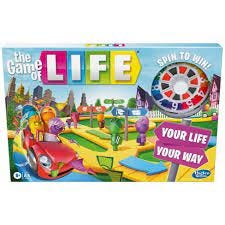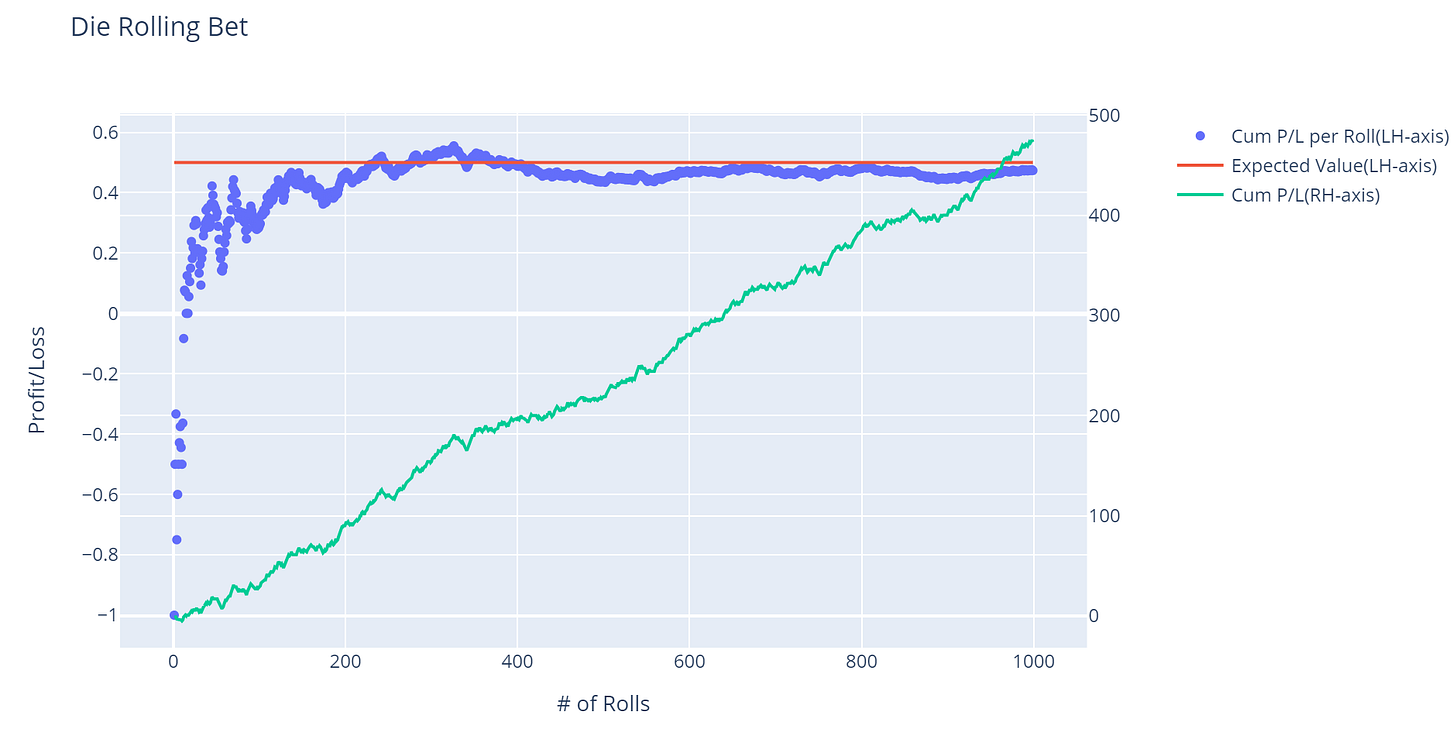CHG Issue #117: The Game of Life
The recurring theme of this newsletter is how life, and the markets are the same thing but how we tend to approach them differently. My favorite example is what we witness every year on Black Friday: The mobs rushing into stores to buy heavily discounted merchandise stands in stark contrast to the mobs rushing to sell stocks when prices are down.
Life is all about change, challenges, and choices. It is a continuous series of choices and so often we seek a single strategy that will put us on easy street and allow us to coast through the waves of life. What career do we pursue, who do we marry, where do we live, where do we send our kids to school? Choices are options and just like the options we see in the market they introduce optionality into our lives and our portfolios. Spirituality in life is akin to positive convexity in the markets. It comes with a cost, but that cost yields many benefits.
“Enter through the narrow gate. For wide is the gate and broad is the road that leads to destruction, and many enter through it. But small is the gate and narrow the road that leads to life, and only a few find it.”
When I talk about spirituality, I mean the idea that there is more to life than our sensory experience. We perceive only a very narrow slice of the complexity around us. It is in times of trouble and through suffering that we begin to perceive a broader view of meaning and value. Things make sense to us when they go according to our narrowly framed plans, but when things break down, we lose the meaning we had tried to impose on the world through our mechanisms of control.
“The thing that is least perceived about wealth is that all pleasure in money ends at the point where economy becomes unnecessary. The man who can buy anything he covets values nothing that he buys. There is a subtle pleasure in the extravagance that contests with prudence; in the anxious debates which we hold with ourselves whether we can or cannot afford a certain thing; in our attempts to justify our wisdom; in the risk and recklessness of our operations; in the long deferred and final joy of our possession; but this is a kind of pleasure which the man of boundless means never knows.”
-William Dawson, The Quest of the Simple Life
We can use a simple die game to illustrate this otherwise existential problem that we all face. I will pay you whatever you roll and since I am such a nice guy, I will let you pay me $3 to play this game. Hopefully you will see that this is a favorable, positive expected value (+EV) game. You can play this game repeatedly and be assured of making a profit. You may lose at times, but in the long run you will achieve sustained wealth.
But you have choices to make: how much do you bet on each roll? What percentage of your wealth do bet on this game? (You can scale up the bet size: ex. Pay $300 to get paid $100 times whatever you roll) Do you bet the same amount each time? Do you parlay? The chart below shows just how the decision to parlay dramatically changes the nature of this game, it shifts from one where success is assured to one where bankruptcy is assured.
When we build our portfolios (investment or life) conventional wisdom says to maximize return for whatever risk we are comfortable with. This is a single period concept, but risk and reward are not fixed and as they change, we face choices. When we buy a stock and hold it for more than a day, we are parlaying the original bet we made on that stock. As we saw above that choice changes the nature of the game we are playing. All the choices we face in the markets and life dramatically change the nature of the game we are playing. So, there is a part of life and the markets that present us with choices, and we may have very little control of what those options are, but we can take the limited options we have and change the overall nature of our portfolio (life) based on the choices we make. In other words, we can take lemons and make lemonade. We can even make a bunch of bad choices that combine into an overall good life (portfolio).
Our reception of wealth, happiness, suffering, and risk has a massive influence on how we make these choices. We tend to associate risk with suffering, and we also fail to see how suffering can benefit us. As a result most people are very risk adverse. According to Jason Fried, founder of HEY and Basecamp, risk tolerance is the scarcest resource in most companies. However, Jason makes the very important point that there is a difference between putting yourself at risk and taking a risk, something that seems obvious but ends up being elusive to us.
Risk is commonly thought of as the standard deviation from the average for a range of outcomes. This is a statistical concept that does not do a good job of describing the risks we face in life. The higher the potential deviation from average the higher the risk. But the average, or expected value, can be elusive based on the choices we make, and the bigger the potential deviations from average the more important the choices. It’s not just the riskiness of a thing but how we handle the choices that come with uncertainty.
Entrepreneur Kunal Shah defines success as having more choices, but we can’t have more choices without taking risks. And we won’t be successful if we squander the opportunities that come from the choices we face. The spiritual life is a difficult one that requires us to look beyond our immediate experience and emotions. If all we desire is to avoid suffering, we will shirk any risk and will never have a chance to be truly happy or wealthy, and if all we want is to be wealthy when we achieve that we run into the arrival fallacy.
“Both trust and gratitude require the courage to take risks because distrust and resentment, in their need to keep their claim on me, keep warning me how dangerous it is to let go of my careful calculations and guarded predictions.”
-Henri Nouwen, The Return of the Prodigal Son
We often hold up celebrities, leaders and other successful people as people who have the lives we desire, but very often those people have stories that include sadness, fear, and suffering. They are not successful because of where they are, but because of how they suffered. But we only see their current state and desire to have that without understanding what it really takes to get there. The problem isn’t life or the markets, it is us. We make things harder than they need to be by trying to make things easier than they are.
The markets this year have been all about the difference between perception and reality. We came into the year expecting the Fed to be done hiking rates and a recession to set in this year. Instead, we got strong economic data in February that kept the Fed hiking and put pressure on interest rates. But the view that higher rates were bad for stocks from last year stopped working. Our collective vision had narrowed in on Fed policy and the economy and we missed what was happening with AI. We had hit a tipping point in the innovation cycle that was missed and all of the sudden our eyes were opened to it when things didn’t work out as we thought, and then we were off to catch up to what we realized we had missed.
And you run and you run to catch up with the sun but its sinking
Racing around to come up behind you again
Pink Floyd, Time
Subscribe for free to support my work.





